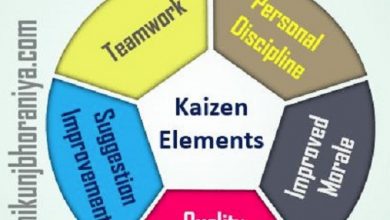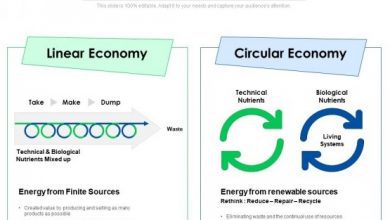What is Headhunting?
In this article we will provide you the information about Headhunting in recruitment in human resources its Working and advantages.
The term headhunting literally refers to an ancient practice present in many native cultures around the world, which refers to nothing more and nothing less than hunting an animal.
Therefore, we can translate this Anglicism as “talent hunter”. This practice began to become a reality in US companies during the 1950s to 1960s, after the boom of large private sector corporations. The professional who performs this work is called a headhunter.
In fact, although this phase of human resources recruitment is most commonly outsourced , the truth is that new HR profiles and roles are emerging. As a result, many people within the company are now focusing on external recruitment.
Headhunting in human resources
Headhunting is a vital part of human resources. This is because it focuses on the search for very specific and even rare profiles, within a professional area or niche, almost at every opportunity, to fill a position that requires a lot of responsibility and experience.
The person responsible for carrying out the headhunting can be considered a recruiter. However, the correct term is “talent hunter”, a direct translation of headhunter. This already gives us a clue of the skills and competences that an HR professional must have to dedicate themselves to this specific branch of the profession.
In fact, a headhunter is usually a methodical person, deeply oriented towards working the details. Furthermore, it deals with high levels of meticulousness and investigative skills. This all helps when finding the ideal person to fill the open positions.
Furthermore, because it is an external position , a headhunter must generate a deep empathy and understanding about the company with which he collaborates. This means not only realizing what your current business goals and challenges are, but also the internal dynamics, organizational culture and values of that organization.
How does Headhunting work ?
Professional headhunters usually work independently or in specialized agencies , the latter being the most common option.
The process begins when a company connects to a specialized agency and informs them of the organization’s status. For this, the company provides a list of requirements they need in a professional profile.
Once this is done, the headhunter will have its own database or its own network of contacts. From there, it will generate new connections with professionals who work in organizations and in functions similar to those demanded by its client.
This can take longer than a traditional recruiting process. Still, the truth is that the chances of success are greater. After the selection of possible candidates, the headhunter will carry out a first interview and, already having some suitable professionals as an option, will report the results to the company.
The last step will be advancing to a second stage of evaluating candidates, by the company’s human resources area.
Headhunting vs Internal Recruitment
When we talk about senior management vacancies within an organization, we can opt for headhunting or, in any case, choose what is known as internal recruitment.
Internal promotion is closely related to career plans , which are essential to ensure well-being at work and reduce staff turnover, in addition to saving time and money.
Main advantages:
Transferring or delegating the search for professional profiles to an external agent can bring great advantages.
- Innovation:
Compared to internal search, it is more likely to find profiles that can “freshen the air” within the company, than opting for someone already used to the work pace. - More options:
Instead of having limited profiles as in the case of internal promotion, the headhunter makes it possible to connect with a diversity of people. These people can contribute in different ways to activities within the organization. - High Specificity:
While we may train our staff to fill a management role in the future, there is a greater likelihood that this type of candidate or candidate with sufficient training and expertise will come from another company where they already have similar or equal roles.
Main Disadvantages:
Of course, it’s not all good news. When we have to evaluate the possibility of conducting an external executive profile search process, some disadvantages can arise.
- It’s a slow process:
Of course, having to look for the ideal person and convince them to leave their current job is always easy. This can be time consuming and resource intensive. As such, the process may take weeks or even months. - Requires more investment:
You must match or exceed a candidate’s salary and flexible compensation in order to join our company. In addition, we will also have to pay the headhunter’s fees, which are generally significant. - The risks can be greater:
The most complex thing about choosing a headhunter is that this person may not be professional enough or may end up not putting in the effort on the project. If that happens, she will present us profiles chosen at random or without the proper level of rigor.
How to optimize this process in companies ?
Considering everything that has been said so far, we can conclude that a good idea is to opt for a combination of internal recruiting and headhunting. One option would be to have, within the human resources area, a person to act as a headhunter.
In this case, there are some mechanisms that can be started and implemented immediately to optimize this process and ensure better results:
- Bet on networking.
Generate new connections and contacts with people in your industry and connect with profiles similar to those required by the company. Also, focus on building authentic relationships. Add value to every interaction to build a network that is meaningful in your industry. - Develop a recruiting plan.
To save time and money, create a deadline for finding the right person. In your search planning, focus on three main aspects: objectives, people involved and tools to be used. That way, it will be easier to control everything that happens at different stages of the process. - Opt for HR software.
From having an ATS to carry out curriculum screening to being able to manage all your documents in one place, an HR software will give you the possibility of having flexible features that adapt to your needs and help the company save time and money .
Headhunting and recruitment, what are the differences?
While both concepts are closely related, the reality is that they differ from each other. To start with, in the vast majority of cases, headhunting is done through agencies or independent headhunters hired to carry out a search process.
In addition, headhunting focuses almost exclusively on finding and hiring very specific profiles. These profiles must occupy management or executive positions in companies already established in a market.
Finally, recruitment takes place through the connection with people (candidates) who are actively looking for a job, that is, in a perhaps more “passive” way. In headhunting, the entire weight of the search process falls on the shoulders of the “talent scout”.
Headhunting is a vital process in any company that must hold executive or management positions that, fortunately, can be performed successfully from the human resources area.




